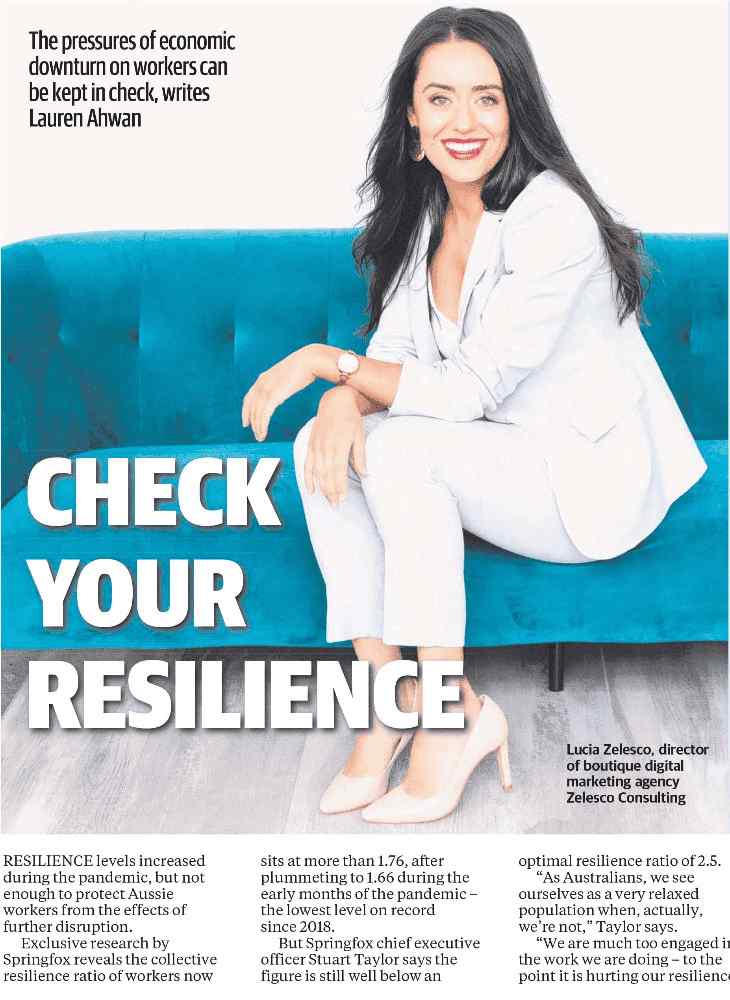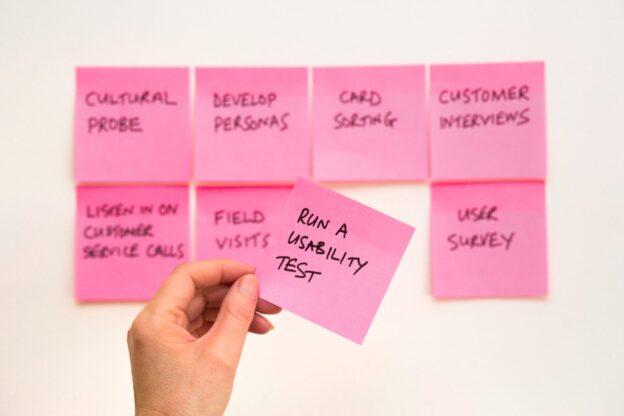Lucia Zelesco, is the founder and CEO of Zelesco Consulting a visionary boutique marketing agency and a strategic empowerer, exerting her existence into tailoring an environment of vibrant productivity in Australia’s excitingly expanding female space of entrepreneurship.
Today, women make up only 30% of all business owners in Australia. According to the Australian Government-workplace gender equality Agency, there is still a staggering gender pay gap of an average of 13.3%, and on average, a woman would have to work an extra 59 days to come out with the same pay as some men in the same industry. Despite this, women are still more likely to self-fund the beginning of their business rather than secure a business loan, one main reason being because of grant refusal. This is the news that Lucia is helping to finally bring an end to.
Currently, her fireball team is preparing for their largest Melbourne-based event yet. Dream Big Women’s Empowering Event on June 21st. It’s structured to “uplift, inspire, and nurture” women entering the business scene while equipping them with resources and connections to help them take off and hit the ground running. With prominent foundations and business owners featured as key speakers such as Zed Nasheet from Zed Real Estate and Suzy Accardi from Intimo, inspiration is sure to pour concrete in their cups (Fill them up with solid motivation) and share the liberation of full-body empowerment.
In 2022, Lucia was a finalist for the Female Entrepreneur Award with the Melbourne Business Network and was nominated for the City Of Yarra Community Award the very same year.

Featured In Herald Sun
She’s been the feature of the Herald Sun, The Daily Telegraph, The Advertiser and more and worked with prestigious names such as Bendigo Bank, Simple Group, NAB, Snowy Mountain & hundreds of small businesses around Australia and the world. She’s boosted millions of dollars of revenue during numerous branding revamps so the value to be gained by attending this event and working with Lucia is monumental.
A percentage of the Dream Big event proceeds will be donated to a wonderful local grassroots charity It’s The Little Things Community, which cooks up and provide wholesome home-style meals and acts of kindness to vulnerable, displaced and disadvantaged people in their community including domestic abuse victims, the homeless and families with seriously ill children.
Secure your tickets to her first groundbreaking event here //www.empoweringwomensevents.com.au/

At Zelesco’s Consulting, the aim is to empower more women to be successful entrepreneurs making our economy and society a stronger place. Facing the historical battle for a fair game, Lucia deploys laughter, fun, relaxation, futuristic thinking, and understanding with gumption throughout her enterprise. By creating a safe and loving culture for people to enter, the energy that would have otherwise been wasted on ill emotions can be focused on your business goals.
“I always say if you’re not smiling, you’re fired”, She jokes with an undertone of sweet importance that’s brewed from compassion for her team.
In just one month, Lucia was able to help King Fisher Tree Services rank at the top of SEO which raised their revenue so much they bought another business.
Taking action to relieve the pressures women face and feel that notoriously recede desired progress, her approach to getting women to think more profoundly and more extraordinarily about their ideas energises the marketing industry with an honest passion that flairs within a family-style workforce.
Lucia explains, “Women are struggling, and they don’t have that seat at the table. And so what happens is they have a scarcity mindset. So they often feel that they need to compete with the other woman because they are suffering and having a hard time, so we just want to foster these new thoughts that are coming out more and more. Collaboration over competition is what is all about, and we can all uplift each other. There are enough opportunities; we live in an abundant world”.

Lucia grew up accompanying her Father on business trips and meetings. Making eye contact and even light conversation with others was an insurmountable challenge when she was younger. Observing the ins and outs of how his business worked filled her brain with her innovative ideas, met by one obstacle.
University brought more boredom with its outdated coursework (5 years behind the real world), which was the tipping point of her fast-tracked self-development. From being a bedroom business to a river-view city office, Lucia not only managed to shake the shackles of her shyness by stepping out with her ancestral-rooted compulsion to help others to be better. Only by throwing herself into uncomfortable positions was she able to tease out the strong leader she is today managing a team of up to 20, sitting on three boards as a director, winning awards, being featured across the national media many times and now starting two more businesses designed to uplift more women in business.

Lucia at the very beginning of her empowering journey.
She beames with bold accomplishment, “People today actually wouldn’t believe me, I was that shy, and through business, I could really push myself, set challenges and set goals, and because I just love helping people so it came naturally. It was just through exposure. I just feel that if you have something that you’re not sure how to do or you feel uncomfortable, just expose yourself to that as much as possible. And then, all of a sudden, I went from a complete introvert to almost a complete extrovert. I just worked through it.”

Lucia’s innocent craving to get above and beyond results for her clients soon rose above any hesitations not to pursue more significant business. Her will to see through her desire and purpose quashed the ‘shy girl’ feelings with the stamp of importance, and life has never been the same since. Zelesco Consulting met a pandemic BOOM which saw business triple, now allowing room for Lucia to teach her business secrets to success in mass volume. Women’s eyes, wild with ambition, coruscate as Lucia fills them with the determination that was exemplary to her.

She guides women into the safe space of being themselves enough to let that flow into their work in her monthly hosted Set Your Soul on Fire workshops that sees female founders congregate in one venue to connect as friends before competitors. They abandon the ‘money is the goal objective,’ and dress brightly inspired by Frida Karlo, who used her pain and suffering to drive female success. Guest speakers talk on a set topic, encouraging breakthroughs through open thinking while networking, and most importantly having memorable fun. Being relaxed enough to allow your dreams to be fulfilled is vital, as Lucia knows from her path of succession.
These smaller intimate workshops then feed into her bigger goals at Empowering Women’s Event to fill a room full of top successful businesswomen and executives from around Australia. Showing them that anything truly is possible! All you need to do is to Dream Big and then work out the little steps, with the right support, the right mentors and the right tools and technology anything truly is possible. There are only a few more tickets left to grab for the event. Hurry book your ticket today:
http://www.empoweringwomensevents.com.au/




Marketing strategies describe how a business will reach and engage its target audience to promote its products and services.
Analysing market conditions, identifying customer needs, and developing tactics to deliver value to customers are all part of this process.
A well-designed marketing strategy can benefit your brand and business.
Here are five reasons why a marketing strategy can help you grow your business
-
Targeted Reach: A marketing strategy aims to help you identify your target audience and tailor your efforts to reach them specifically. Developing targeted marketing messages and selecting the most appropriate marketing channels for your customers can be achieved by understanding their demographics, behaviours, and preferences. Focusing on qualified leads increases the chances of converting them into customers.
-
Brand Awareness: Building brand awareness is essential for long-term success. With a marketing strategy, you can deliver consistent brand messaging and visuals to your target audience. Continually delivering these messages across multiple channels can increase brand recognition and familiarity, making your brand more memorable and trustworthy.
-
Competitive Advantage: In today’s highly competitive business environment, a well-executed marketing strategy can give you an edge over your competitors. By conducting market research, you can identify the strengths and weaknesses of your competitors. This allows you to differentiate your brand and develop unique selling propositions. By focusing on your brand’s strengths and communicating why you are the best choice for your customers, you can gain an edge over your competitors.
-
Customer Engagement and Loyalty: Engaging and connecting with customers is integral to marketing strategies. Content marketing, social media engagement, email campaigns, or loyalty programs may be involved. Maintaining customer relationships and providing value beyond the initial purchase can help you foster customer loyalty and encourage repeat business. The word-of-mouth that is spread by satisfied and loyal customers is often positive, attracting new customers and spreading positive word-of-mouth.
-
Business Growth and Revenue Generation: Ultimately, a marketing strategy should increase revenue and drive business growth. When you develop a well-planned strategy, you can generate leads, convert them into customers, and encourage repeat sales. Implementing effective marketing strategies can expand your customer base, increase sales, and ultimately increase profits. Furthermore, as your brand reputation and customer loyalty grow, you can command premium pricing, improving profit margins.
Here are some examples of marketing strategies to help you:
-
Content Marketing:
-
Social Media Marketing
-
Influencer Marketing
-
Search Engine Optimization (SEO)
-
Email Marketing
-
Product Differentiation
-
Customer Relationship Management (CRM)
-
Event Marketing
-
Referral Programs
-
Strategic Partnerships:
Develop a marketing strategy for your business.
Marketing strategy is a powerful tool for brand development and business growth.
It helps you reach the right audience, build brand awareness, gain a competitive advantage, foster customer loyalty, and drive revenue.
By investing time and resources in developing and implementing an effective marketing strategy, you can position your brand for long-term success in the marketplace.
“A new pair of eyes can guide you if you feel lost in your business – Zelesco Consulting: Your Melbourne-based marketing consultant.”
Visit our website to schedule an appointment or give us a call
The Meaning and Impact of ChatGPT on Business in the Future
AI websites and tools are already transforming the business landscape, and their impact will only grow in the future. Keep reading to learn more.
With ChatGPT, it is possible to construct a human-like conversational dialogue using natural language processing.
Despite its accessibility, it now has a predicted 100 million active monthly users, which continues to grow. That kind of recognition took nine months for TikTok and two and a half years for Instagram.
ChatGPT was developed by whom?
ChatGPT was created and launched by OpenAI, an AI research company, in November 2022. A group of entrepreneurs and researchers, including Elon Musk and Sam Altman, founded the company in 2015. Microsoft is the largest investor in OpenAI.
Why should businesses use ChatGPT?
- By providing fast, reliable, and personalised customer service, ChatGPT can help businesses improve customer service. Through ChatGPT, businesses can handle customer inquiries and complaints 24 hours a day, reducing waiting times, enhancing customer satisfaction and increasing efficiency by automating repetitive tasks such as data entry, appointment scheduling, and order tracking. This can free up employees to focus on more strategic and creative work.
- The ChatGPT system can assist businesses in reducing the need to hire human customer service representatives or administrative personnel.
- By improving the customer experience and enabling faster response times, ChatGPT can provide businesses with a competitive advantage.
How does ChatGPT affect ethical concerns?
While ChatGPT may prove useful for some tasks, ethical concerns are associated with its use, including bias, lack of privacy, and cheating.
- As a result of its humanlike capabilities, ChatGPT may be used unethically in ways such as cheating, impersonating, or spreading misinformation.
- ChatGPT has a significant ethical concern regarding its bias in training data.
- ChatGPT may replace certain jobs and human interactions, including data entry and processing, customer service, and translation assistance.
- ChatGPT uses text input to reveal sensitive information, thus raising privacy concerns. The model’s output can also track and profile individuals by collecting information from an It associates that data with a user’s telephone number and e-mail address.
What is the future of ChatGPT in business?
ChatGPT has the potential to transform many aspects of how businesses operate and interact with customers in the future.
Businesses will likely determine how quickly and effectively ChatGPT impacts their business by how quickly and effectively they adopt and integrate the technology.
No matter what your long-term goals are, ChatGPT is a solution that businesses of all sizes should consider to meet their long-term objectives.
When you feel lost in your business, it is time for a fresh set of eyes to help you find your way.
Contact us today to schedule a strategy consultation!
There is no doubt that marketing strategies are necessary for all businesses regardless of the industry, product, or service they provide.
This article will discuss the importance of SEO, as it allows you to become a professional in yourfield. It also drives traffic to your website. Further, it facilitates small business owners in creating websites that rank highly in search engines by being fast, robust, anduser-friendly. This attractsmore customers to their sites and converts them at high conversion rates. This willclarifythe murky waters of marketing in the long run.
WHAT IS SEO
Search Engine Optimization (SEO) is the practice of optimising your website and its content to allow search engines to easily crawl and understand your website, leading to higher search engine rankings and greater visibility on search engine results pages.
SEO is a critical part of any successful digital marketing strategy, as it helps businesses attract more qualified organic traffic, enhance their online authority, and ultimately increase their conversion rates.
You can follow a few tips and tricks to enhance your website’s search engine optimisation
Researching keywords is the first step in any successful SEO campaign. It involves identifying the most relevant and high-traffic keywords and phrases related to your business and strategically incorporating them into your website’s content.
Various keyword research tools, such as Google Keyword Planner and SEMrush, can be used to determine the most appropriate keywords to target. Ensure you choose keywords that accurately describe your products or services and have high search volume and low competition.
- Optimise Your On-Page Content
Once you have identified your target keywords, you will need to optimise your website’s on-page content so that search engines can crawl and understand it easily.
Optimisation involves optimising your website’s meta tags (title tags, meta descriptions, etc.) and ensuring your content is structured logically and easily read.
Ensure that your target keywords are organic and natural when writing your content. It is important not to overstuff your content with keywords, as search engines could view this as spammy and lead to a penalty.
- Build High-Quality Backlinks
Search engines use backlinks as one of the most important factors in determining your website’s authority and relevance.Backlinks are links from other websites to your website. Increasing the number of high-quality, authoritative sites linking to your website will increase its authority in search engine results.
To build high-quality backlinks, consider creating informative blog posts, infographics, or videos that other websites will want to link to. Additionally, you can contact other websites in your industry to see if they are interested in linking to your site.
- Make Sure Your Site is Mobile-Friendly
Increasing numbers of users are accessing the internet from their mobile devices, making it imperative that your website is optimized for mobile viewing. A responsive design that adapts to different screen sizes ensures easily readable content on smaller screens.
To increase your visibility in search engines, ensure your site is optimised for mobile viewing by optimising it for mobile viewing.
Finally, it is crucial to periodically monitor your website’s analytics to determine your progress and identify areas for improvement. You can gain valuable insight into your website’s traffic by using tools such as Google Analytics, which allow you to identify which pages are performing well, which keywords are driving the most traffic, and the source of your visitors.
As you monitor your analytics, you will be able to identify areas for improvement and make data-driven decisions to optimise your website’s SEO over time.
TODAY’S TAKEAWAY
- Not focusing on ranking!
- Not over-optimising content!
- Not thinking you need SEO!
- NOT TO DO: Guaranteed rankings, unethical tactics, aggressive language, lack of transparency, and a poor website or branding
- TO DO: Customisation, Customer-centered approach, experience and expertise, and an honest and realistic approach.
MAKE YOUR MARKETING ACCOUNTABLE
- Good product and service
- Patience
- Good branding
- Understand your target audience
KEEP THIS IN MIND
To conclude, while SEO is a complex and ever-changing field, you can improve your website’s search engine visibility and drive more qualified traffic to your site by implementing these tips and tricks. To succeed in SEO, you should create high-quality content, build authoritative backlinks, and optimise your site for search engines and mobile devices.
GET IN TOUCH WITH ZELESCO TODAY
ZELESCO offers a full range of marketing services to complement your overall marketing and sales efforts, from marketing plans to marketing teams.
An experienced, a full-service marketing and branding agency focused on achieving your business objectives. Marketing plans, activities, and creativity are grounded in a comprehensive strategy to ensure growth and success.
Get in touch today via email or contact us at lucia@zelescoconsulting.com.au
Lean-Agile is a set of working ideas and practices that tries to reduce waste while increasing value. This allows businesses to prioritise quality in their products and services.
We’ll look at the fundamental principles of Lean-Agile and strategies that increase effectiveness while reducing waste in this post. We’ll also look at why your organisation has to be trained in Lean-Agile before you and your team start using it, even if not all units will be utilising it daily.
What is Lean-Agile?

Principles
Lean-Agile principles put adaptation over prediction and have seven core ideas: eliminating waste, amplifying learning, empowering the team, and more. Borrows from Lean software.
Project Management Practices
Sprints, retrospectives, points, user stories, and so on. Often other businesses who see themselves as Agile are already focused on these practices and are using them.
Technical Practices
Frequent/continuous integration, TDD, BDD, and so on. These processes are highly centred on achieving quality in software and are focused on ensuring effective software development.
The term “Lean-Agile” refers to a combination of Lean concepts and Agile methods.
What are Lean principles?
In their book Lean Software Development: An Agile Toolkit, Mary and Tom Poppendieck effectively describe the principles of Lean. Here’s a quick rundown:
- Eliminate Waste.What exactly is waste? It’s everything that doesn’t “bring value to a product, as seen by the customer.” Waste is anything that is created or stored but isn’t utilised. Parts that are collecting dust on a shelf. “[When] developers code more features than are immediately needed,” for example. How much time is wasted transferring development from one group to another? According to Mary and Tom Poppendieck, this is also a waste.
- Amplify Learning.Taking on a software solution, according to the Poppendiecks, is akin to trying to come up with a fresh recipe for a top restaurant dish. A chef will iterate and gain knowledge from the results. Software development is more complex, and teams can be large, but amplified learning allows for this discovery process.
- Decide as late as possible.There can be a lot of unknowns with something like embedded software development. Which processor will best suit the product and the needs of the users? Should we write code in x, y, or z? Is this screen superior to that one? Is it conceivable that functionality will change as a result of user or market feedback? Speculating is a waste of time. Instead, wait until you have all of the data before making a decision.
- Deliver as fast as possible.“Design, implement, evaluate, and improve,” and so on. Rapid development is a good concept; it allows you to make informed judgments based on real-time feedback. Shortening the cycle increases learning and ensures that clients get what they need now, not what they required yesterday.
- Empower the team.The people who are doing the task are the ones who know the most about the intricacies. Do you want to achieve “excellence”? Make sure your technical team is involved in technical decisions in the specifics. Allow these teams to arrange and complete work using pull approaches and local signalling mechanisms (such as Kanban) while keeping everyone informed about what’s coming up. “They will make better technical decisions and better process decisions than anyone can make for them,” says the boss.
- Build integrity in. The emphasis is on quality control here. This is more than just satisfied customers. Perceived integrity is what it’s called. And it goes beyond conceptual integrity, in which all of the pieces fit together flawlessly. Building integrity in software means that it can evolve smoothly over time because it has a coherent architecture, scores high on usability and fitness for purpose, and is maintainable, adaptable, and extensible. Building integrity in a team means having wise leadership, relevant expertise, effective communication, and healthy discipline.
- See the whole.Don’t concentrate on just one aspect of a project. Take a step back and assess the entire situation. Quite often, the common good suffers when people are preoccupied with their own [specialised] interests. Instead of evaluating people’s [specialised] contributions, consider the project’s overall performance.

Where does Agile fit into the picture?
When you compare the aforementioned Lean principles to the Agile Manifesto principles, you can see where they intersect. Both emphasise learning and a people-first approach while enabling waste-free, sustainable solutions. Agile’s emphasis on continual improvement complements Lean’s approach.
Prediction is a waste of time.
Traditional project management methods like Waterfall attempt to foresee all aspects of a solution from the start. This type of solution is unlikely to adjust significantly in the face of new facts, and it is also unlikely to adapt to new learning.
Predicting wastes time and stops you from making an informed decision once you have all the data. It also slows down delivery.
When traditional project procedures are utilised in software development, software functionalities may go underused. Trying to guess what features the user wants is a common source of waste.
Without training and awareness, Lean-Agile is nothing.
We also make sure that our clients understand where we’re coming from. When a sales conversation begins, we coach them using Lean-Agile principles.
But how can you empower people without becoming tyrannical?
Coaching is the best way to gain adoption of Lean-Agile. Rather than dictating the ideas, training should allow your employees to discover them and how they may apply them to themselves and others. You then continue the instruction, assisting them in making it a habit rather than a thought.

Be lean and agile to be effective.
We hope that you’ve become interested enough in Lean-Agile to consider how you may apply it to your company by this time.
Reducing your carbon footprint is an essential element of going green. These four strategies will enable you in improving your company’s sustainability and efficiency. Running a profitable business is challenging. Running a good company while being environmentally conscientious is much more difficult.
However, just because our modern free-market industrial system makes running a sustainable business complex does not determine what your company should offer to the global catastrophe. Populations will suffer, economies will suffer, and business spending will skyrocket as resources become scarcer and more expensive due to climate change. It gives us insight into sudden climate change by defeating your company’s carbon footprint, humanitarian and commercial.
Microsoft, Google, Lyft, Salesforce, and smaller businesses like Burt’s Bees and Diamond Foundry have already made commitments to becoming carbon neutral. Business leaders who join them as sustainability pioneers can take four crucial first steps to encourage their organisations to take on more carbon responsibility.
Aim toward zero waste.
Moving paperless, if you must, giving old machines and office stuff, and utilising reusable, biodegradable, or recyclable packaging can all help you achieve zero waste. Assessing your company’s existing waste generation, management, and disposal is the first step towards zero waste.

Harness renewable energy sources.
Although taking measures may require a significant financial expense, the use of green energy banks such as solar energy will protect your company’s funds over time. Solar panels are the most common and efficient option if you want to get or rent renewable energy tools for onsite placing at your firm.
Several power companies offer the option of purchasing a “green” service that uses electricity produced from renewable sources for a small charge. Given the inadequate production of resources and the urgent passing of the international climate change bill being implemented soon, businesses should immediately analyse and reduce their energy consumption.
You can work with a provider specialising in generating energy from renewable sources in states where electricity generators can compete.

Cut business, travel emissions
It doesn’t matter if you travel by plane, car, or train. Modern modes of transportation are one of the most significant sources of glasshouse gas emissions. Of course, the most effective strategy to cut business travel emissions is to avoid it altogether.
Transportation emits 29 percent of total glasshouse gas emissions in the United States each year. To reduce commuter emissions, consider allowing employees to work from home. The travel businesses themselves contribute to the reduction of emissions.

Educate and engage employees.
Let your employees participate in environmental agreement assistance, such as Forest Founders, which uses a lower body dashboard to encourage customers to regulate and neutralise their carbon footprint by planting trees through NGOs and local organisations. Make it unique to overcome environmental discouragement and urge your employees to understand their potential to make a positive difference by educating them about carbon accountability.
Carbon tracking subscription services can make carbon accountability more enjoyable for customers by allowing them to see the results of their activities firsthand. To motivate your team members to see their carbon footprint awareness, appeal for ideas for energy-saving solutions in the workplace through employee meetings and suggestion boxes.

Dismayed by dire predictions and blunted by corporate greenwashing, it’ll be simple for everyone to comply and understand the strength that holds us from taking a significant environmental action. Nature and business don’t have to be mutually exclusive. You may save money on energy, raise employee confidence, strengthen your brand as a sustainability leader, and boost your bottom line by decreasing your company’s carbon footprint – all while saving the resources and environment we all rely on.
Start a greener and healthier journey with us today!

















